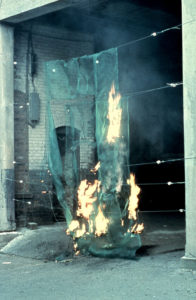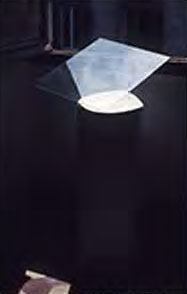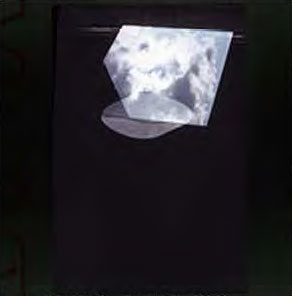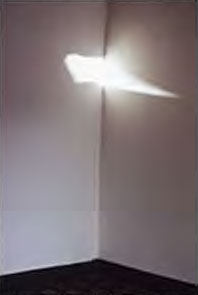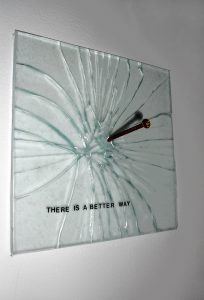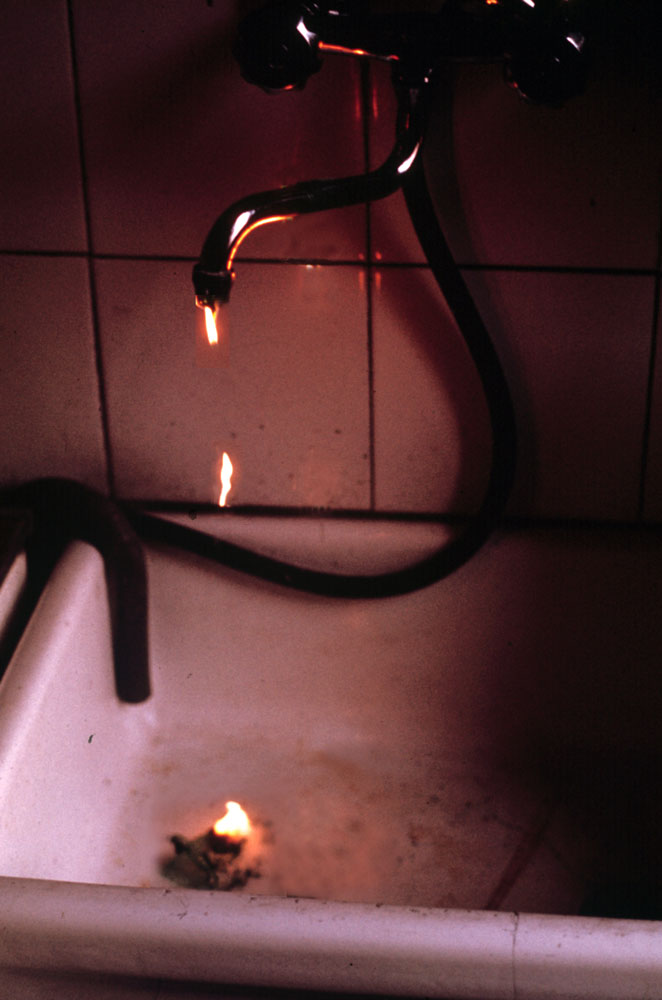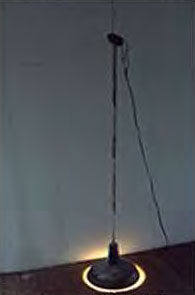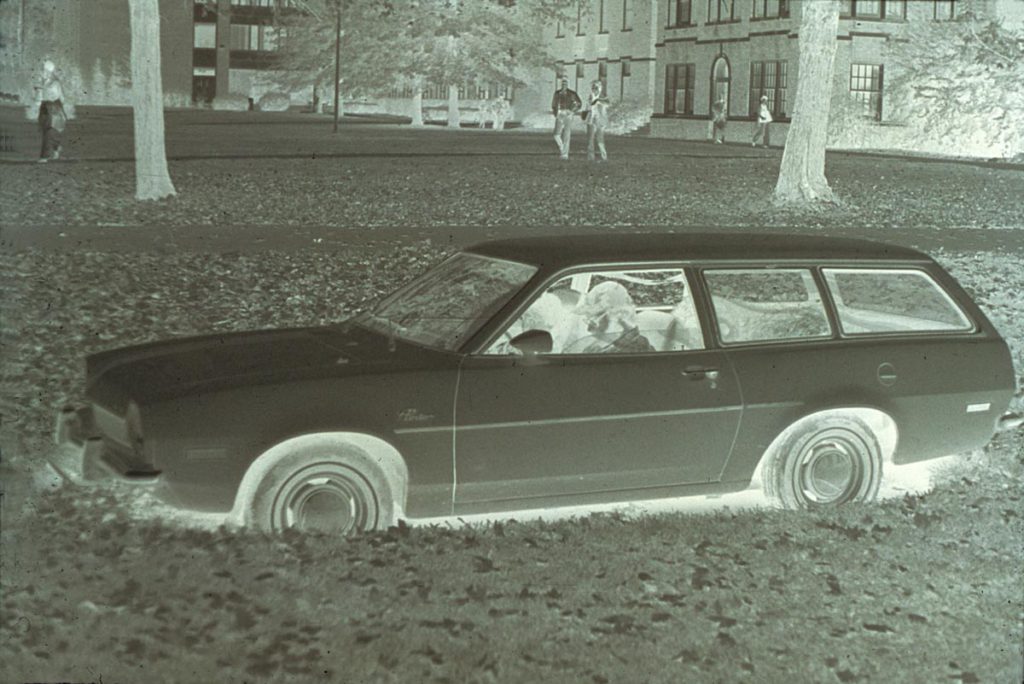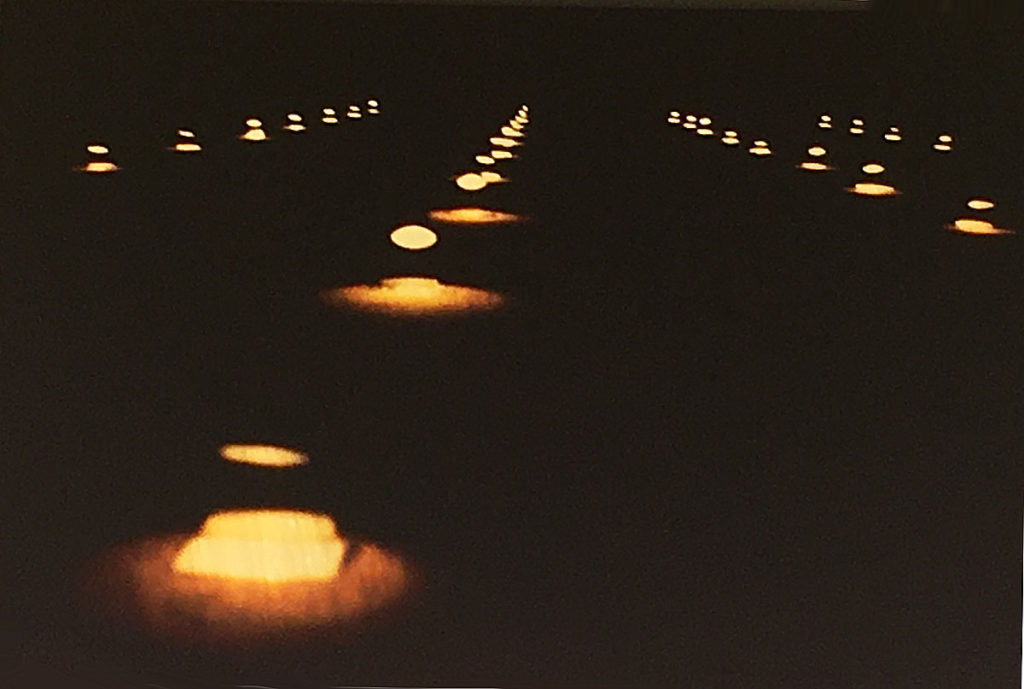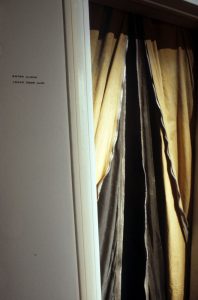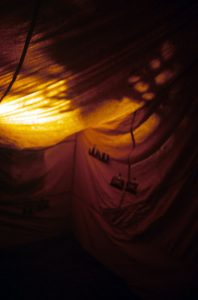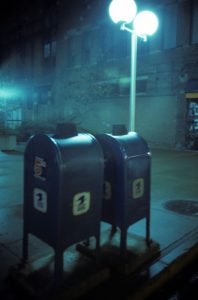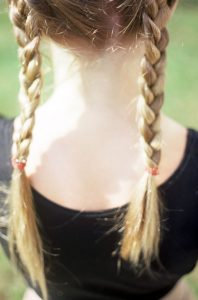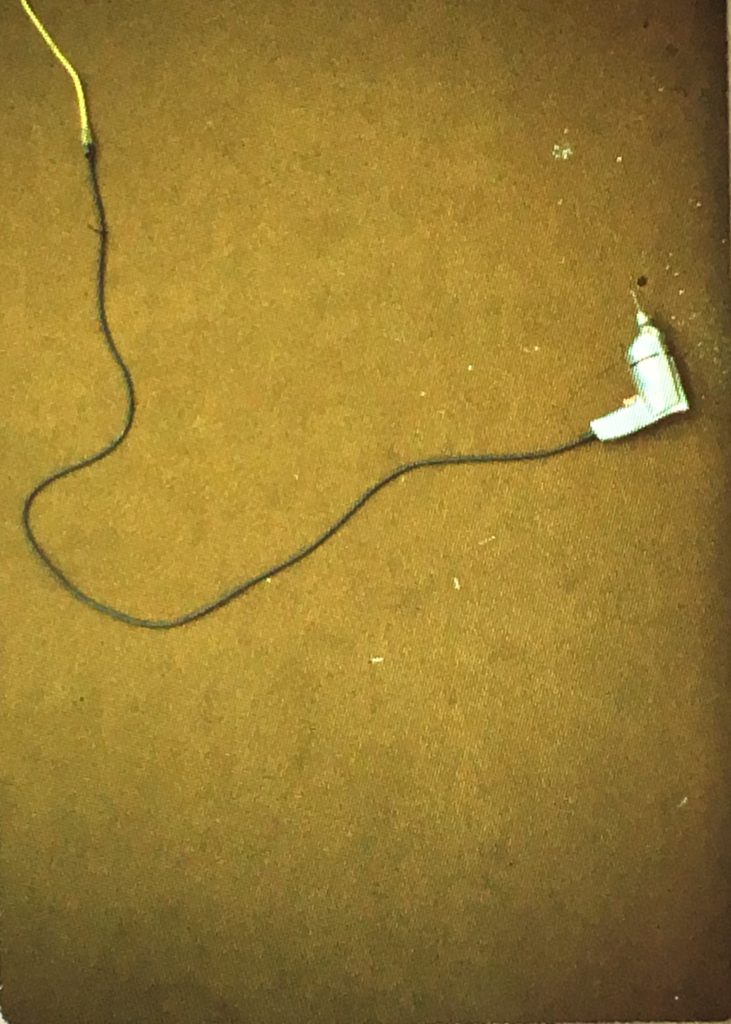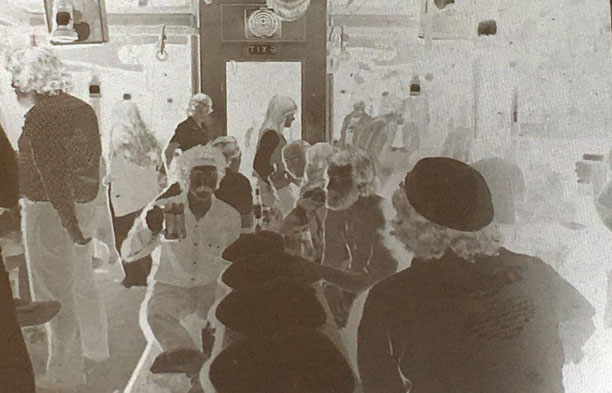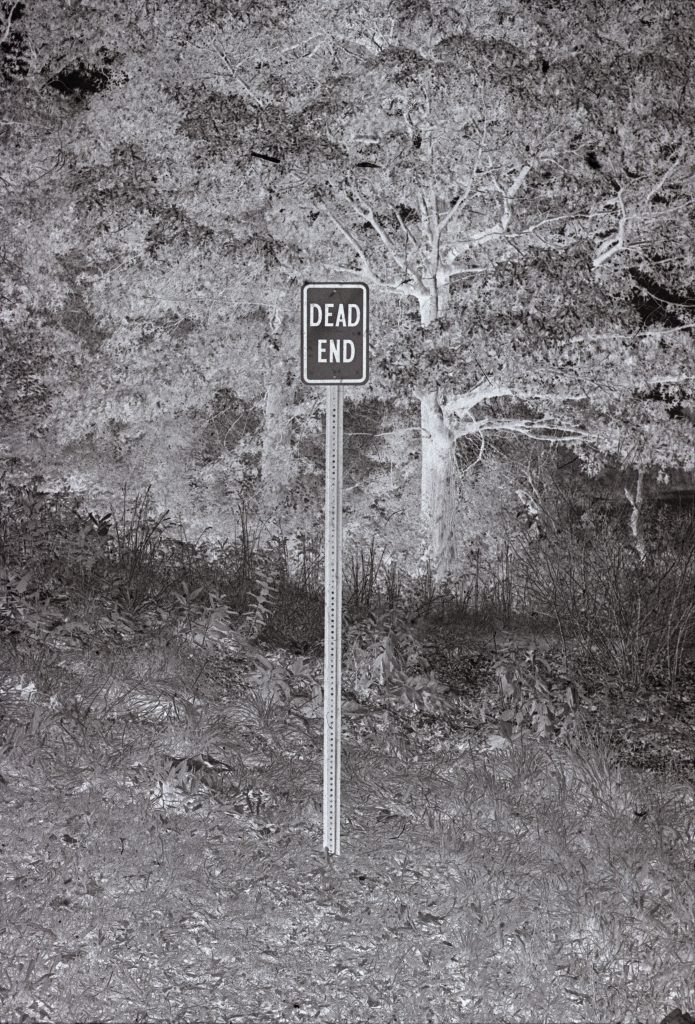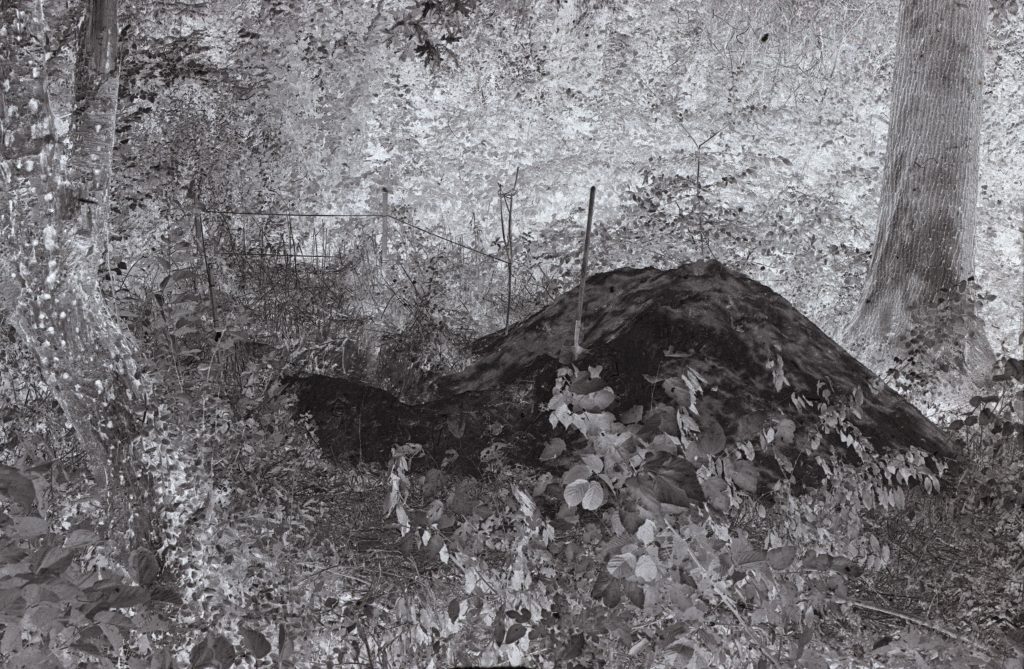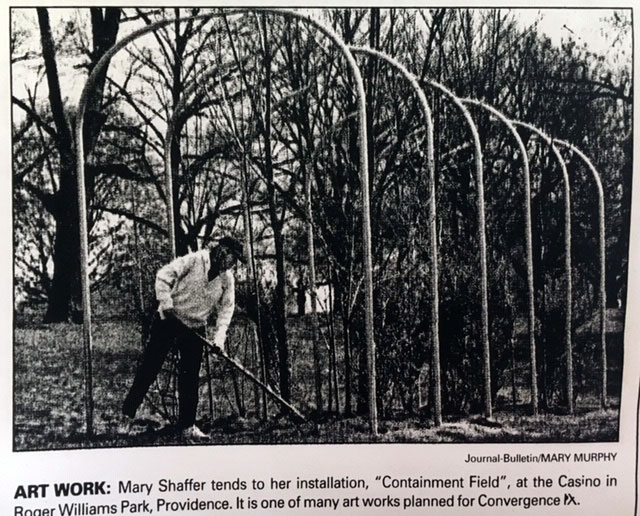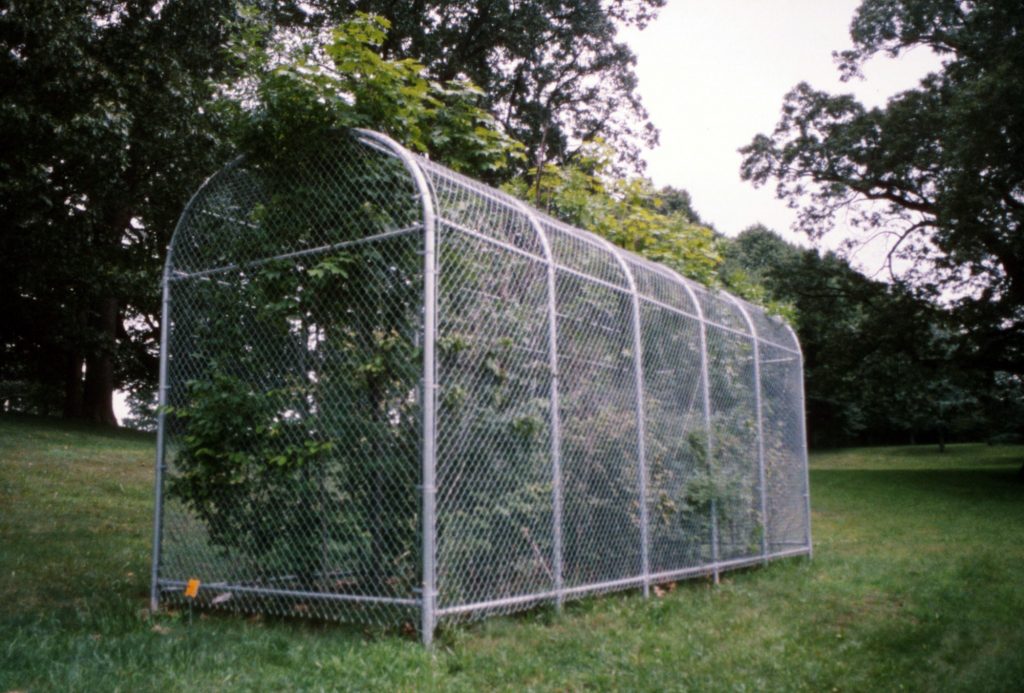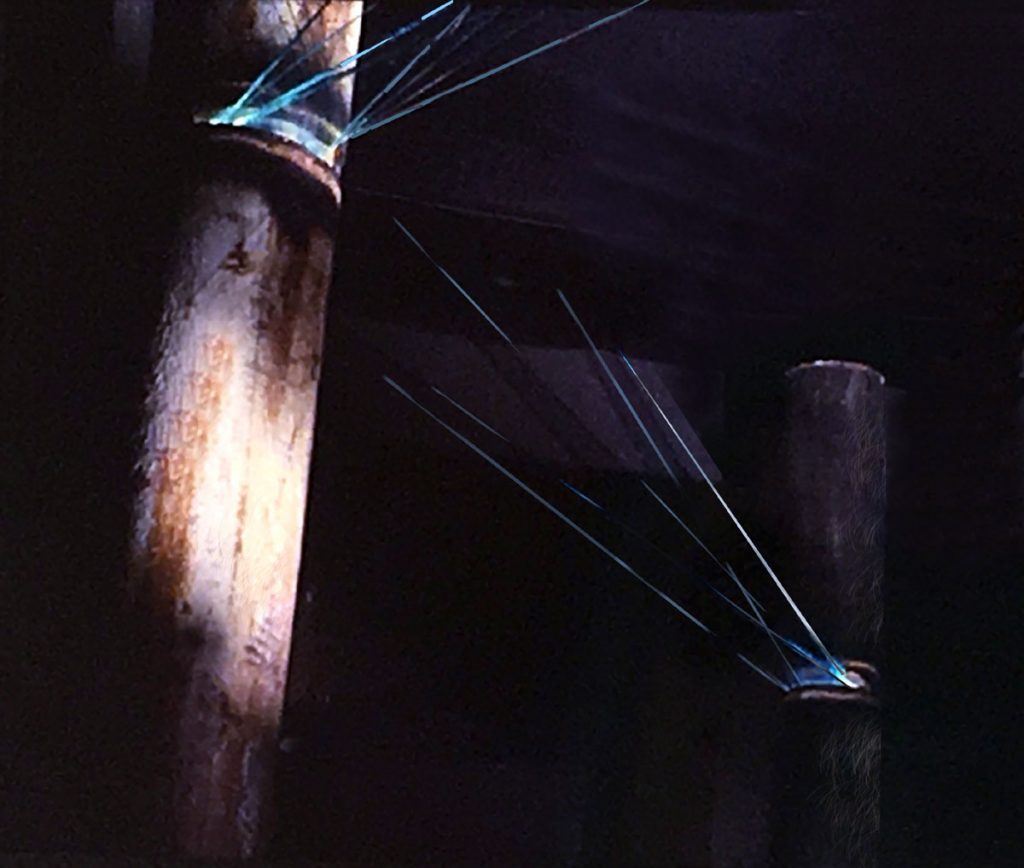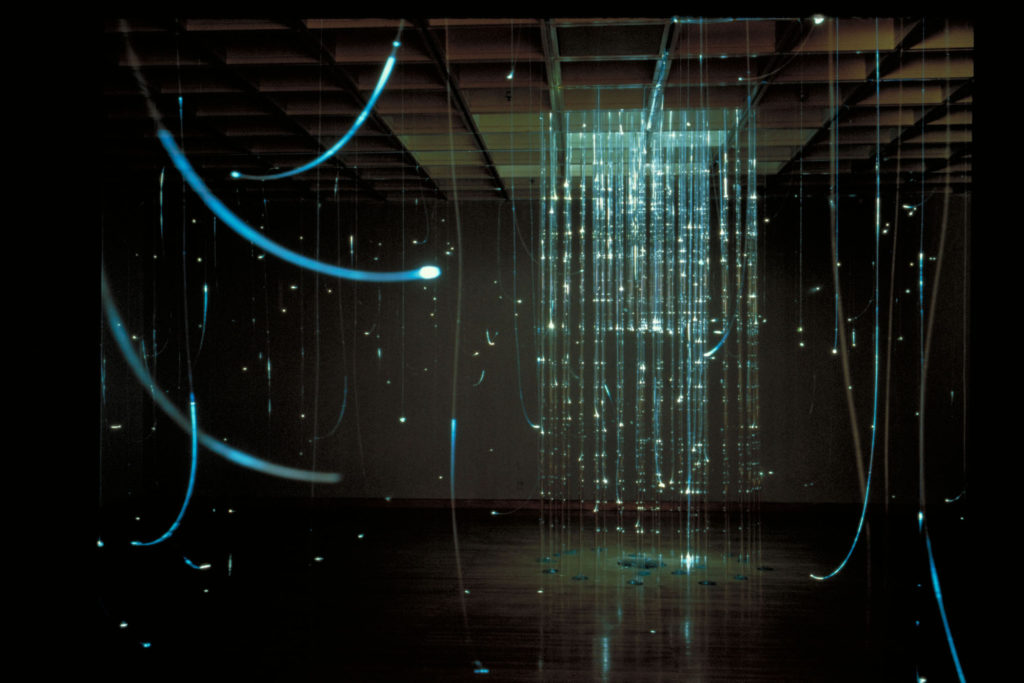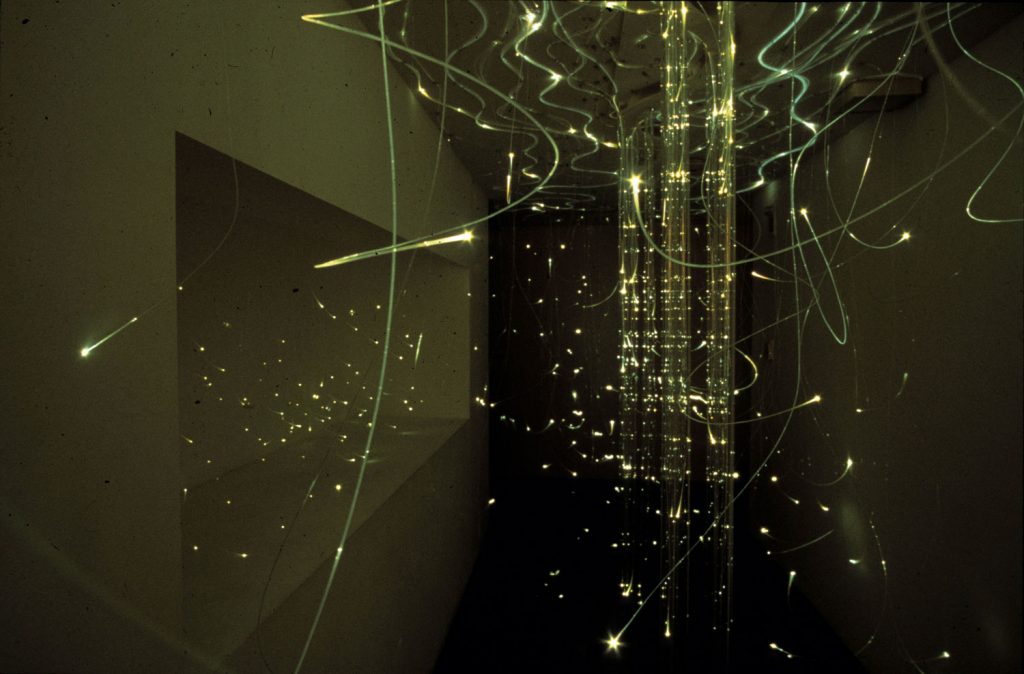University of Rhode Island, Kingston, RI 1997
Duality and loneliness
‘Just the Two of Us’ is experienced by walking into a building, down a hall, then into a large gallery room. In the middle of the room is a cube where a slightly smaller than average door is brightly lit. Beside the door is the text ‘if open enter alone and shut door’. As soon as you walk into the cube (inside a room inside a building) you feel as if you’ve stepped into the middle of the forest. You are in a golden brown canvass tent, there are shadows of tree branches moving above you, the tent is rippling as if in a slight breeze, it smells like the forest and the floor of the tent is on an uneven dirt ground, which you smell also.
There is one sleeping bag on the floor and a small radio with a soulful song playing “Just the Two of Us as happy as can be, just the two of us the way it ought to be, just the two of us, just the two of us…..” then it repeats. The jazz signer told me how sad the song made her feel. On the walls of the swaying tent are identical post card size images taped to the walls two by two of the dual images I took. In the middle of the tent is a single tent pole. You feel very alone and safe, far from other people. You come to understand that duality is the logic of our world. We have two arms and feet, our cars are made in our body image with two headlights. We have up and down, hot and cold. This is our understanding of the world and our place in it is to mate with the other. Our survival as a species demands that.
If you take a guided tour through the Newport mansions, the guide explains that everything in the house had to be symmetrical. If there was only one door into a room, they would create a false door to maintain the summitry.
With ‘Just the Two of Us’ I was mourning the loss of my marriage, a father for my two children. I noticed that when I looked at two stones flanking a driveway or two mailboxes side by side that it made me feel lonely. I started collecting images of things that were two by two, haystacks, entrances to school, street lamps, my daughters pony tails, a car’s headlights among many others. These were the images I used in post card size taped to the walls of the tent.
